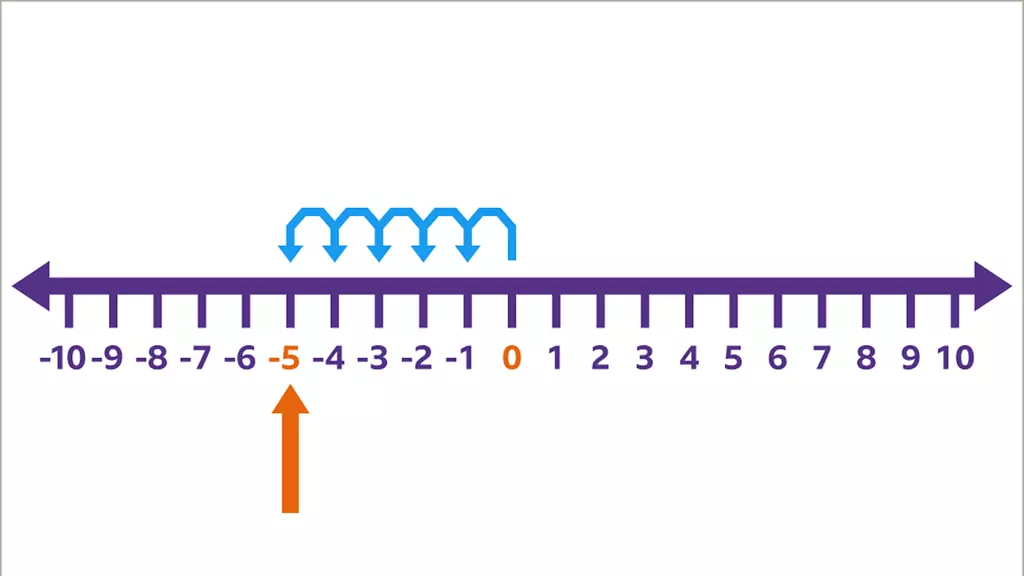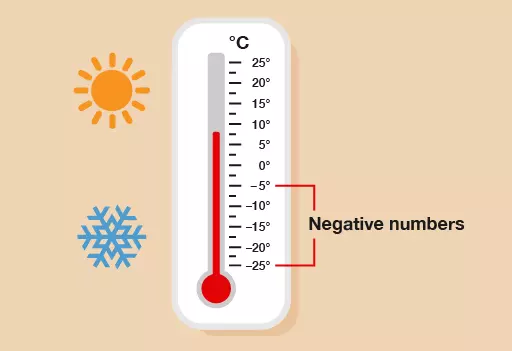Students want to be able to clutch the concept of negative numbers to provide accurate responses to questions. A negative number is any number lower than zero, and it is the inverse of a positive number.
Many people consider mathematics to be a challenging topic. One has to question the point of learning mathematics and what role mathematics plays in actual life. Math is ubiquitous, as is an appreciation for the importance of numbers and their connections to life’s experiences.
Math is all about numbers, and those numbers may be broken down into various categories, including whole numbers, integers, real numbers, complex numbers, rational numbers, and irrational numbers, amongst many more classifications of numbers.
Every negative integer has a value greater than zero but less than infinity. Along with the number, a symbol showing a minus or a dash (-) is required when writing negative numbers. Negative numbers are numbers depicted to the left of the origin (zero) on a number line, and the values of these numbers are less than zero.
Definition Of Negative Numbers
Negative numbers are a subset of real numbers that may include whole numbers and fractions, amongst other possible representations. Said, these are all the numbers with a value lower than zero. When a negative number is shown, a dash will be displayed to the left of the number. A negative number might be something like -3, for example.
Negative Numbers in Math

If a person is solving an equation with a negative integer, they will want to be sure they are cracking the problem correctly. If they subtract a considerable number from a smaller number, the answer will be negative since the difference between the two numbers will be less than zero. If they subtract a large number from a smaller number, the response will be negative.
For instance, if the equation is written as 3-5, the equation’s solution will be -2. When looking at a number line, the individual will begin at the number 3 and go five places to the left. As a result, they have located two positions to the left of zero, which gives them a value of -2.
Addition Or Subtraction Of Negative Numbers
If learners have to subtract a considerable number, they may find it helpful to utilize a subtraction calculator to help them with this task. However, while utilizing a calculator, it is essential to use extreme caution.
It can assist them in ensuring that they get the correct response provided that they input the numbers in the proper sequence and know whether the answer should be positive or negative.
Real-Life Applications Of Negative Numbers
It may be amazing to discover that these numbers are smaller than zero. It is because we often consider zero to imply nothing. For example, if there are no more pens in the box and 0 pieces total, you do not have any pens.
There is no more that can be done. It’s hard to fathom having anything in this situation, much less than nothing. In contrast, there are certain real-life circumstances in which you must employ numbers greater than zero. The following are a few examples of their uses in real life:
Temperature

The term “temperature” refers to a physical number expressing an object’s warmth or chilliness. On the Celsius scale, a temperature with a positive reading indicates warm or hot weather, whereas a temperature with a negative reading indicates cold weather.
A thermometer is a physical instrument used for temperature measurement, and there are many different temperature scales and units of measurement. The Celsius scale, the Fahrenheit scale, and the Kelvin scale are the ones that are used for measuring temperatures the most often.
On the Celsius system, the temperature of absolute zero is the lowest that can be reached, but the lowest temperature that can be reached on the Fahrenheit scale is 459.67 degrees.
Money
When referring to credit, the financial industry often uses negative integers as a representation. A negative bank balance indicates that the money has been pulled out more than it should have been. Therefore, a negative amount of money is always shown whenever someone owes any amount of money to any other party.
Elevator or lift
People and commodities may be transported vertically inside a building using a lift, often known as an elevator. In most cases, the ground floor of a building is regarded as being equal to 0. As a result, the entrances to levels below the ground floor, such as the basement or the parking level, are marked with negative numbers or integers (e.g., -1,-2,-3.)
Sea level

Sea level, often known as mean sea level (MSL), is the standard level of water that may be found across the world’s seas. This level of surface water is used as a reference point for determining elevations that are either higher or lower than it.
The height above or below the mean sea level describes a geographic location’s elevation or depression. Negative numbers are used to denote geographical places that are below sea level.
Quizzes Or Games
Negative numbers are often used when tallying the scores or points in some games or sports and assigning penalties. You could lose points if you provide the incorrect answer on a quiz or come in last place in a game (such issues are considered negative numbers). In addition, calculating scores in some sports, such as golf, may include the usage of negative integers.
Conclusion
Integers with a minus sign are known as negative numbers, often used to indicate a low value, the lack of, or a reduction in some quality or quantity.
On a number line, negative numbers are located to the left of positive numbers (+), considered the reverse of positive numbers.
When students have to subtract more significant numbers, they may utilize one of the popular subtraction techniques. Subtracting little numbers might be simple, but when they need to remove more essential numbers, it can be more difficult. They may write the numbers on top of each other and then, beginning with the numbers on the right, make one vertical line at a time to break it down into smaller portions that are simpler to subtract. This method can help them simplify the problem. Although this is the most popular approach, getting familiar with alternative approaches might also be helpful. This will make subtraction much simpler.
The answer to the equation will be affected differently depending on whether or not a number is positive or negative. Understanding how to deal with negative numbers will be very important for any student, whether they are competing on a calculator, a pencil and paper, or working out an equation in their mind.
Despite this, it is a fact that in everyday life, we may be able to get by without them. Most individuals believe that they are just more convenient to simplify things somewhat. Remember that in the real world, having them is more of a luxury than a must for you.
